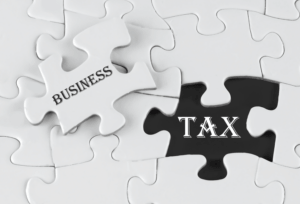Accounting Equation Explained Definition & Examples

A lender will better understand if enough assets cover the potential debt. Liabilities are claims on the company assets by other companies or people. The bank has a claim to the business building or land that is mortgaged. Ted is an entrepreneur who wants to start a company selling speakers for car stereo systems. After saving up money for a year, Ted decides it is time to officially start his business. He forms Speakers, Inc. and contributes $100,000 to the company in exchange for all of its newly issued shares.

Company
If it doesn’t, then your books are out of balance, most likely because there was an entry made to an owner’s equity account that isn’t reflected in your calculation above. The expanded accounting equation details how this transaction affects both sides of the the accounting equation is usually expressed as equation. It keeps the balance intact while showing how the company’s operations and financial decisions influence equity with other elements like revenue, expenses, and dividends. You can automatically generate and send invoices using this accounting software.
Example: How to Calculate the Accounting Equation from Transactions
In essence, the accounting equation connects the resources a business has at its disposal with the claims against those resources. Assets encompass everything that a company owns, including cash, inventory, property, and equipment. In contrast, liabilities represent the financial obligations a company has to outside parties, such as loans, accounts payable, and mortgages. The differentiating factor is equity, which reflects the owners’ stake in the business after all liabilities have been settled. The income statement is the financial statement that reports a company’s revenues and expenses and the resulting net income. While the balance sheet is concerned with one point in time, the income statement covers a time interval or period of time.
Defining Assets in Accounting

Accountants and bookkeepers use the T-account to analyze transactions and spot errors easily without going through detailed ledger information. For instance, underestimating depreciation could make profits look higher than they actually are, which may mislead investors. On the other hand, overly cautious estimates could hurt a company’s profitability and future decisions. Debits are cash flowing into the business, while credits are cash flowing out. Working capital indicates whether a company will have the amount of money needed to pay its bills and other obligations when due. Barbara is a financial writer for Tipalti and other successful B2B businesses, including SaaS and financial companies.
The business has paid $250 cash (asset) to repay some of the loan (liability) resulting in both the cash and loan liability reducing by $250. The cash (asset) of the business will increase by $5,000 as will the amount representing the investment from Anushka as the owner of the business (capital). If a transaction is completely omitted from the accounting books, it will not unbalance the accounting equation. The 500 year-old accounting system where every transaction is recorded into at least two accounts. Owner’s or stockholders’ equity also reports the amounts invested into the company by the owners plus the cumulative net income of the company that has not been withdrawn or distributed to the owners. After the company formation, Speakers, Inc. needs to buy some equipment for installing speakers, so it purchases $20,000 of installation equipment from a manufacturer for cash.
- Similarly, with foreign currency transactions, volatility due to fluctuating exchange rates can significantly change the financial outcome of a deal.
- While this approach is quite straightforward and can be verified, it does not consider the impact of inflation, depreciation, market fluctuations, and other factors.
- The balance sheet is a more detailed reflection of the accounting equation.
- For small businesses, knowing how the accounting equation works can help you better understand financial statements, along with how bookkeepers do their jobs.
- It’s important to accrue expenses so that you record them in the proper accounting period, even if you delay payment until the next accounting period.
- This arrangement is used to highlight the creditors instead of the owners.
This business transaction increases company cash and increases equity by the same amount. Owners can increase their ownership share by contributing money to the company or decrease equity by withdrawing company funds. Now that we have a basic understanding of the equation, let’s take a look at each accounting equation component starting with the assets.
- The figures for this equation come from the balance sheet, which shows the overall financial position of a company.
- The two primary categories of assets are current assets and non-current assets, both of which play a vital role in the accounting equation.
- The claims to the assets owned by a business entity are primarily divided into two types – the claims of creditors and the claims of owner of the business.
- For example, if you subtract liabilities from assets, you will get equity, and vice versa.
- However, due to the fact that accounting is kept on a historical basis, the equity is typically not the net worth of the organization.

The accounting equation works on the double-entry bookkeeping principle, where every transaction affects at least two accounts in the books to maintain balance. This balance, where assets equal the sum of liabilities and equity, ensures that every asset is either funded by debt or the owner’s investment. By analyzing the loan cost against the potential gains from the new asset, the company can determine if the transaction positively impacts its financial health and equity in the long term. A cost-benefit analysis can further help to assess whether taking the loan is beneficial.
Issuing new shares or receiving Bookstime additional capital from owners increases equity, which enhances the company’s financial strength. On the other hand, any losses or dividends paid to the shareholders decrease equity, leading to a reduction in the owner’s share of the company’s value. Additionally, a solid understanding of the accounting equation can enhance strategic decision-making. Business owners who grasp how their actions affect assets and liabilities will be better equipped to navigate financial challenges and seize opportunities. Improved financial literacy enables professionals to forecast future growth, budget effectively, and allocate resources wisely.
This measure directly reflects the company’s profitability over time and indicates how effectively management has utilized profits to grow the business. To calculate the accounting equation, we first need to work out the amounts of each asset, liability, and equity in Laura’s business. The accounting equation shows the amount of resources available to a business on the left side (Assets) and those who have a claim on those resources on the right side (Liabilities + Equity). Obligations owed to other companies and people are Accounting Periods and Methods considered liabilities and can be categorized as current and long-term liabilities.
